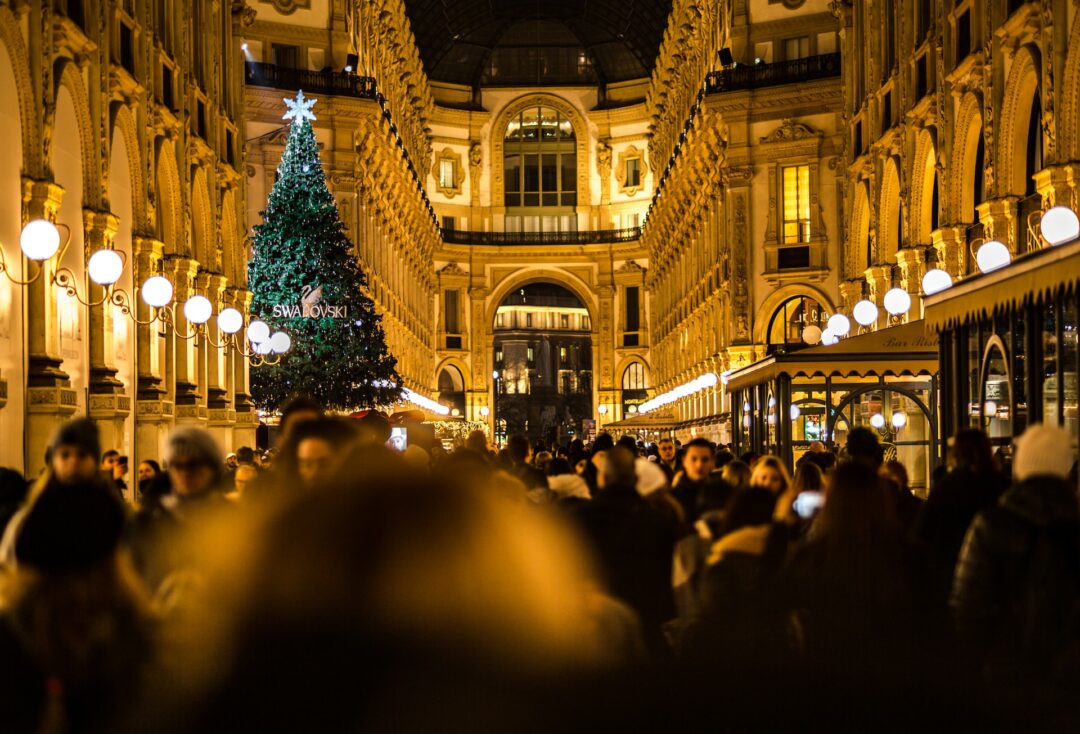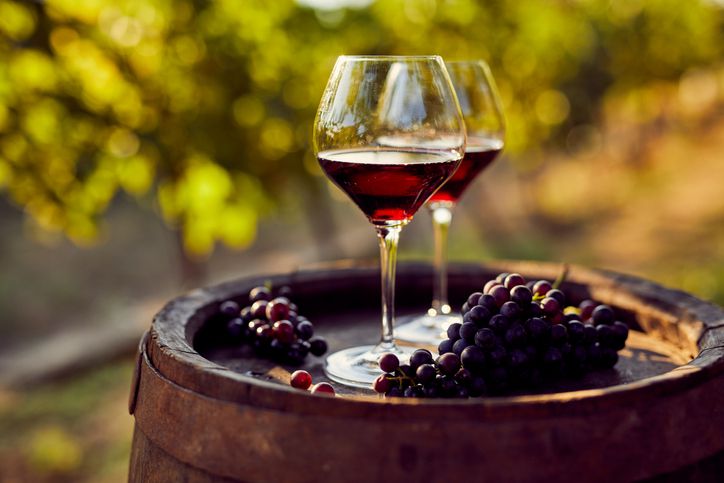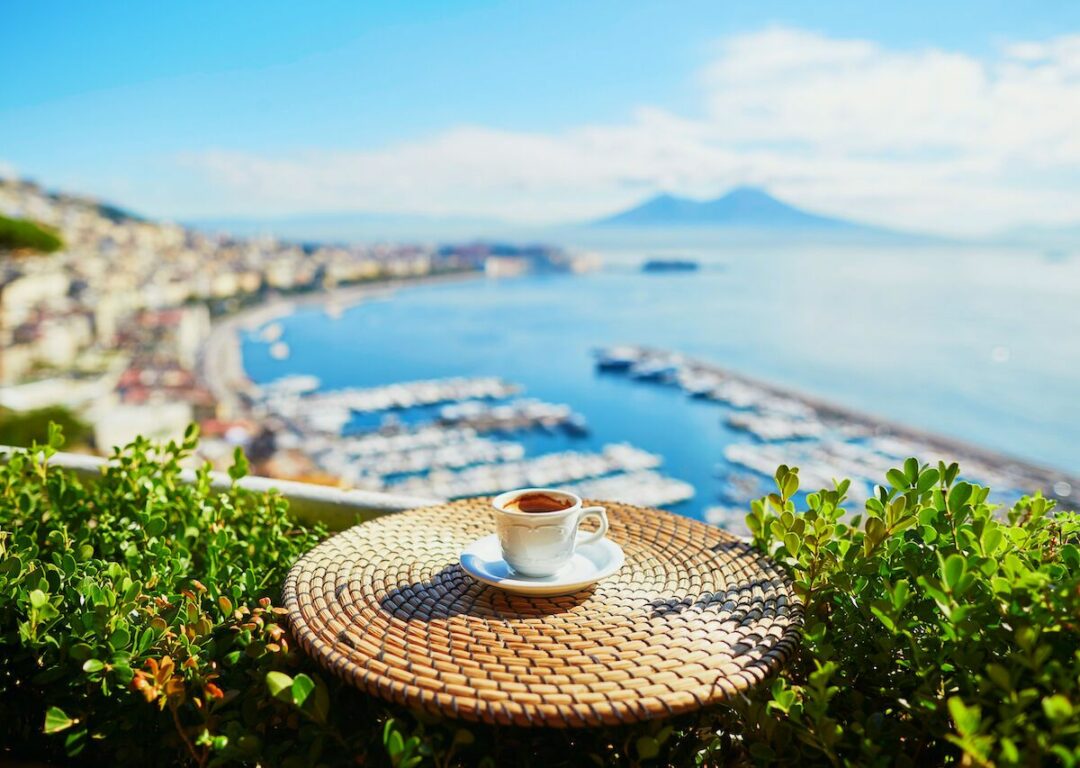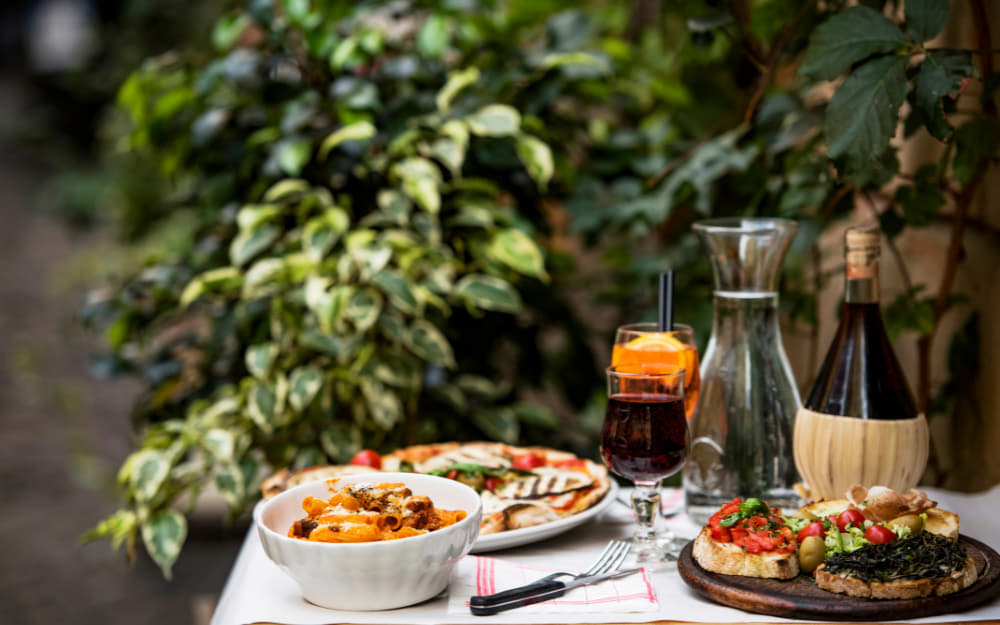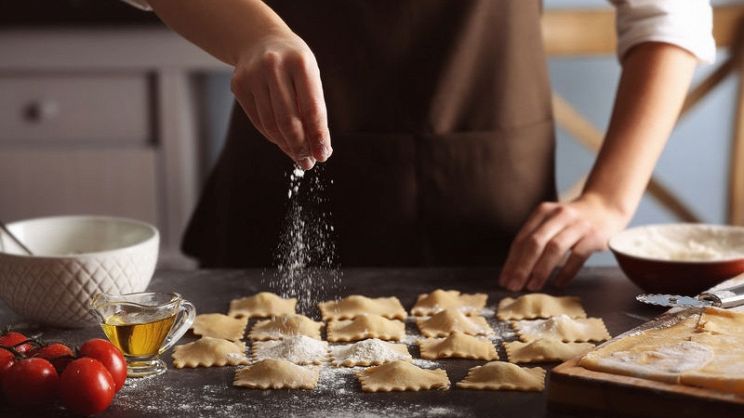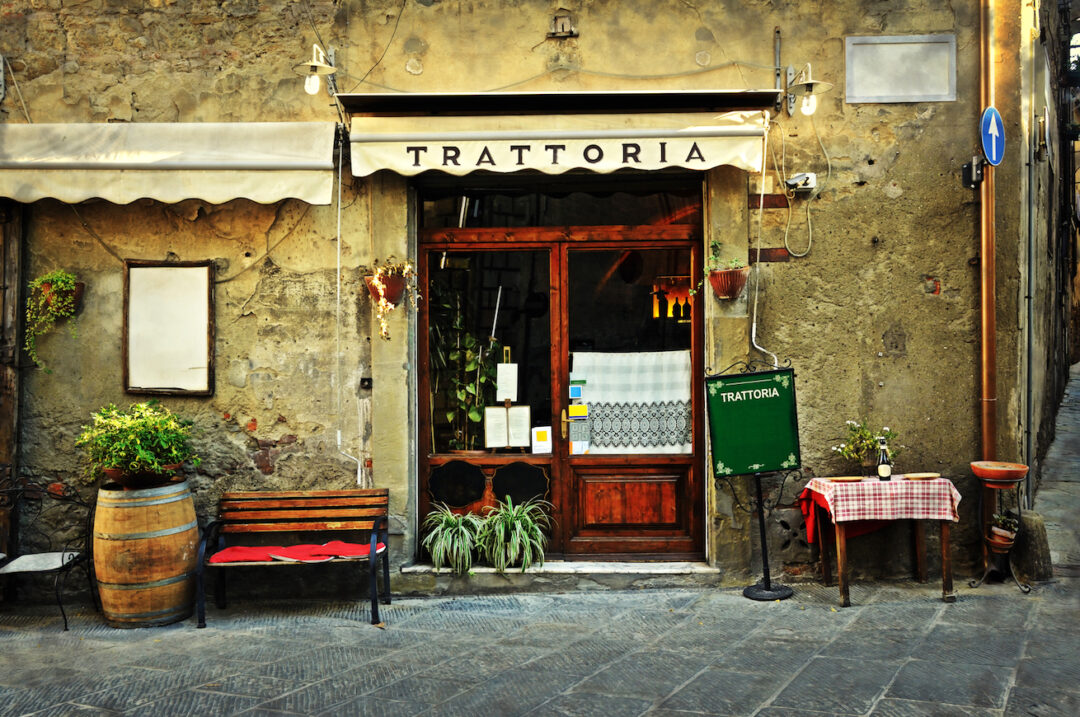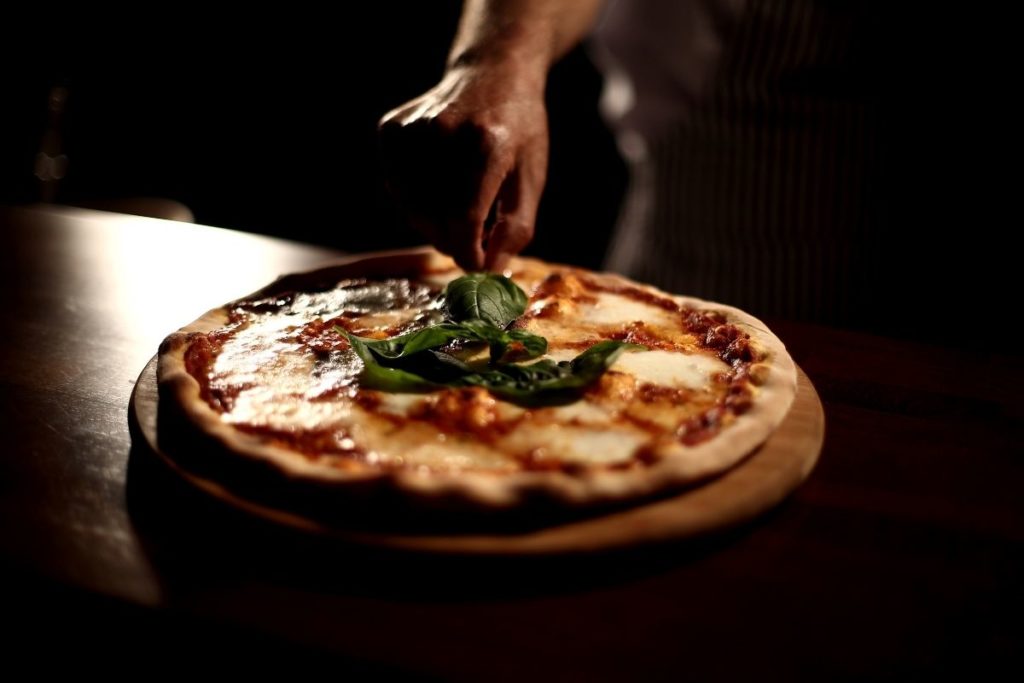This week we want to stop one moment and dedicate a post to Christmas holidays, and to the endless, secular, heartwarming Christmas traditions in Italy. Here in Italy, Christmas celebration lasts about one month, starting on December 8th, the day of the “Immacolata”, on which traditionally the “presepe” (Nativity scene) and the Christmas tree are set up, and lasting until the Epiphany, celebrating the visit of the Magi to the infant Jesus, on January 6th.
When you imagine your dream wedding in Italy, what are the images that come to your mind? What would you be looking forward to the most? Let me guess: crowning your dream of love surrounded by beautiful sceneries and breathtaking landscapes, spending a carefree and lighthearted night celebrating with your loved ones immersed in the charm of Italian culture, discovering and exploring the most beautiful sites and places around your wedding venue… and experiencing the real Italian cuisine, of course!
SOME FACTS ABOUT ITALIAN WINE
27 Aprile 2022Wine is one of Italy’s most iconic products. Italy has more than 4,000 years of winemaking experience and a near-perfect climate for producing winemaking grapes.
Did you know that Italy makes more wine per year than any other nation in the world?
Winemaking is embedded in our culture and is considered a valuable part of the nation’s history.
The Roman Empire was crucial to the winemaking industry: it was during this period that the wine market grew considerably. The Romans believed wine was a daily necessity, so it was available everywhere. They refined the winemaking process with innovative techniques, some of which we still use.

What are the most appreciated Italian wines?
Barolo originates from Northern Italy, specifically from the Piedmont region and is made from Nebbiolo grapes. It is high in tannins, which give this wine a bitter note.
Off of the Italian mainland, Cannonau di Sardegna comes from the Italian island of Sardinia. This wine is made from the very grapes that give the wine its name and is particularly sweet.
From the area of Brescia in the Lombardy region, originates the sparkling wine of Franciacorta, also known as the Italian Champagne, as it is made from the same grapes.
Historically referred to as Nebbiolo di Barbaresco, Barbaresco wine is made from the same grapes of Barolo, but has a more earthy and musty taste.
Emilia-Romagna region is home of the Lambrusco, characterised by a rose hue and a fruity aroma.
In Tuscany, the Chianti Classico wine is produced in several provinces throughout the regions and is made from a mix of different grapes.
Another Tuscan wine is Brunello di Montalcino, made exclusively from Sangiovese grapes.
Amarone della Valpolicella is known for being one of the most prestigious red wines from the Veneto Region, it has a bold and aromatic flavor.
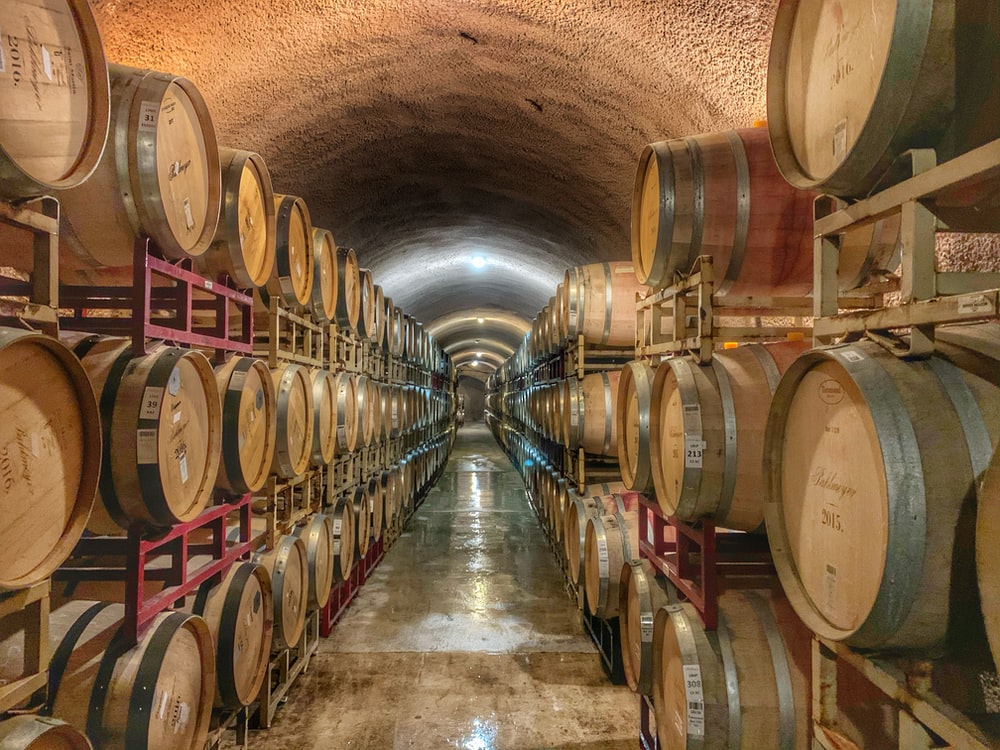
Italian wines are many more and these are just the most famous. Also, it is almost impossible to describe their complex flavors in just a few lines.
A lot of wedding venues here in Italy are also wineries, and offer the possibility to organise tastings. We warmly suggest you try them yourself!
Have a good day,
Elisa
Italian coffee culture has a rich heritage.
Italy was an early coffee importer and the birthplace of espresso and the moka.
Whether it’s visiting an espresso bar in the morning or drinking coffee to put the finishing touches on a delicious rich meal, coffee consumption here is an historic, time-honoured ritual.
It’s one that us,Italians are proud of and attached to despite the growth of third wave coffee culture in most major coffee consuming markets around the world.
Venice was one of the first European ports to import coffee beans in the 16th century. Trieste, one of the early hubs of coffee trade, is known as “the City of Coffee”. Naples is regarded by many as an historic coffee culture capital of the world.
But it was the invention of espresso in the late 19th and early 20th which truly sealed Italy’s global reputation for coffee.
Today, espresso is a symbol of Italian national identity, widely adopted in all its forms by the rest of the world: lungo, ristretto, macchiato, caffè latte, cappuccino, marocchino, shekerato… the options are endless.
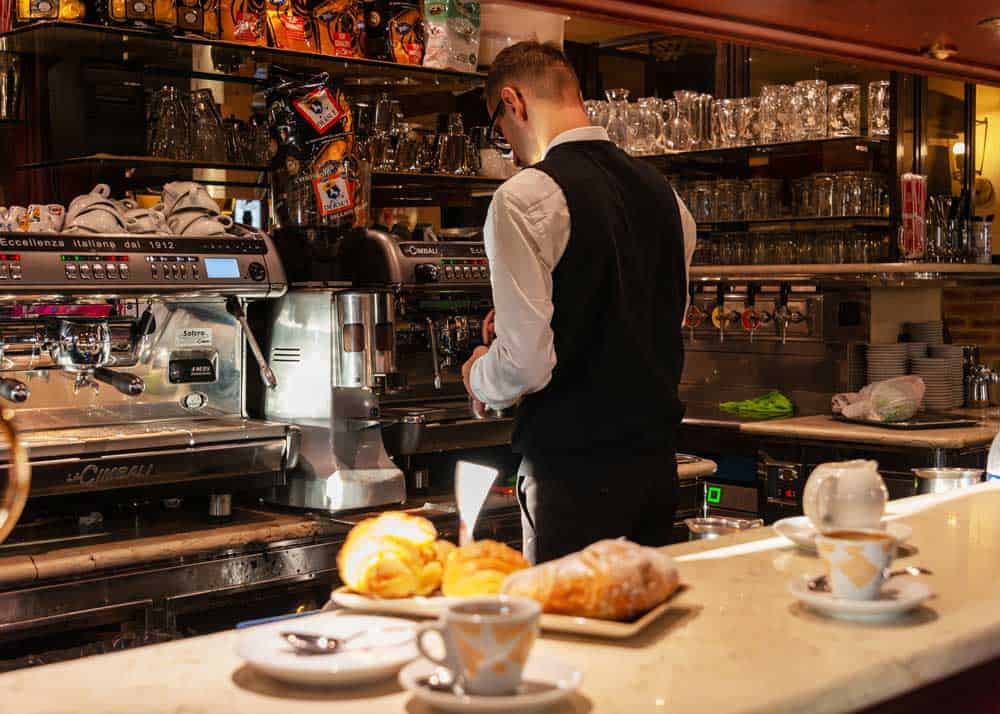
Coffee in Italy differs greatly depending on whether you’re in the north or the south.
In the south, Italians like their coffee on the strong and creamy side. They will sometimes have a glass of cold water first so that their mouths better withstand the high temperature of the coffee. This will also cleanse your palate, making the flavour of the coffee stronger. The end result is a sharp bitter aftertaste, which can be managed with a bit of sugar.
In the north, drinkers prefer a more delicate approach to Italian espresso. Here you are more likely to find medium roast coffee, which is why the Arabica bean is popular in this region. Northerners are after a sweet aftertaste while enjoying some time at an Italian cafe.
THE ITALIAN MOKA
It’s the most commonly used system in Italy for domestic coffee making. Traditionally, almost all Italian households have at least one.

it was invented by the Italian Alfonso Bialetti in 1933 and named after the city of Mocha, in Yemen, renowned for the quality of its coffee.
Moka remains the most traditional way to make a quality coffe, and if you take good care of it, it will be a trusty companion for many years.
See you soon!
Love,
Elisa
Gelato is a milestone of Italian food culture.
It dates back to the 16th century, but as often happens, there is some confusion in the origin as to where or who really invented gelato.
As most stories go, it is credited to Bernardo Buontalenti, a native of Florence, who delighted the court of Caterina dei Medici with his creation.
Italians are certainly credited with introducing gelato to the rest of Europe; with Sicilian born Francesco Procopio dei Coltelli who undoubtedly was one of the most influential individuals in the history of gelato, as one of the first to sell it to the public. Summoned to Paris in 1686, he opened a cafe named after himself called “Cafe Procope”, which quickly became one of the most celebrated meeting places of the literary establishment in France. In Italy meanwhile, the art of traditional gelato making was passed on from father to son, improved and perfected right up to the 20th century, when many gelato makers began to emigrate, taking their expertise to the rest of Europe.

Gelato in Italian means “frozen”, but it is basically used to indicate the Italian ice cream. One of the basic differences between Gelato and the ice cream is that it contains two thirds less butterfat and it doesn’t have as much air, therefore has a more intense flavor. Gelato is healthier than American-style ice cream since it is made with all natural ingredients and contains fewer calories and less butter fat.
Gelato is served 10-15 degrees warmer than ice cream. Since it is less solidly frozen, gelato’s taste is further enhanced as it melts in the mouth.
GELATO HEALTH FACTS
- Gelato is both lower in fat and calories compared to traditional ice cream. In the U.S. for example, ice cream is generally made with cream, and is classified by its butterfat content.
- Gelato is made from milk or water, which accounts for a lesser percentage of butterfat and therefore calories and fat. Gelato, especially when made with milk and/or nuts, contains a high amount of protein, which is needed daily in the human diet.
- Gelato also contains a high number of vitamins. Fruit sorbettos tend to have a higher amount of vitamins in them, but even cream flavors made from milk contain essential vitamins.
- Because gelato is made from milk, it a great source of calcium for non-milk drinkers.

BEST GELATERIE IN ITALY
Every year the gastronomic guide Gambero Rosso provides a ranking of the 50 best Italian artisanal gelaterie.
Here are some of them:” Artico” and “Ciacco” in Milan, “La Boutique del Gelato” and “Zeno Gelato e Cioccolato” in Verona, “De’ Coltelli” in Pisa, “Torcè” in Roma, “Cappadonia Gelati” in Palermo, “Profumo” in Genova.
In the next post, we’ll talk about Italian coffee culture, stay tuned!
Have a good week!
Elisa
ITALIAN REGIONAL SPECIALTIES pt.2
6 Aprile 2022Hi everyone,
Let’s continue our gastronomic journey towards the tip of the boot of the Italian Peninsula.
Many of Italy’s most famous pasta dishes, including spaghetti alla carbonara, cacio e pepe, and pasta alla gricia originated in LAZIO, home to Rome.
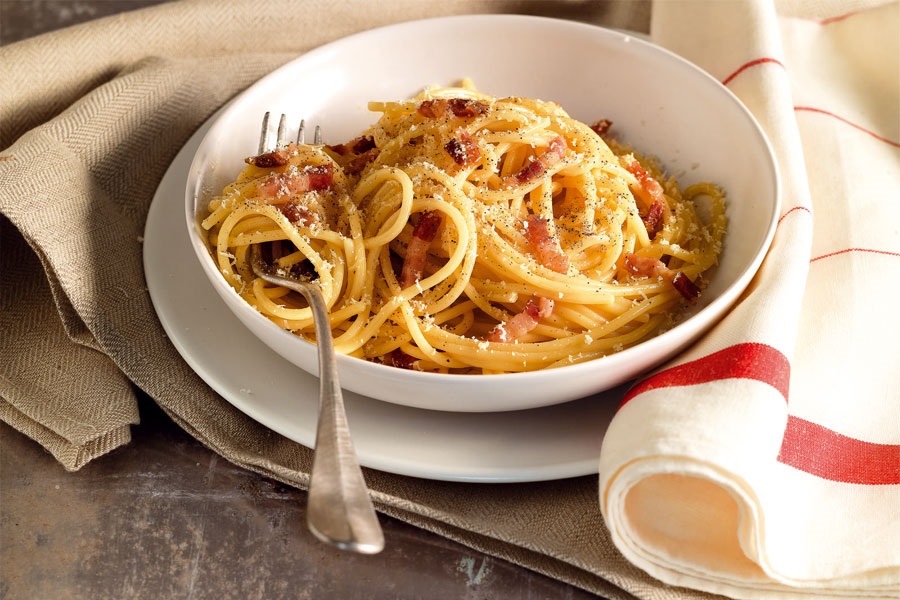
This region is mainly famous for long strand noodles like spaghetti and fettuccine rather than short-cut pasta.
Another extremely popular dish is saltimbocca, imitated all over the world, and the pasta sauce arrabbiata.

For many, PUGLIA is their first stop on any Italian gastronomy tour.
Orecchiette is the pasta of choice here, which translates into “little ears” and are made with just flour and water. Typically served with cime di rapa (turnip greens), or aged ricotta and fresh tomatoes, orecchiette is ideally shaped for soaking up and enjoying sauces.
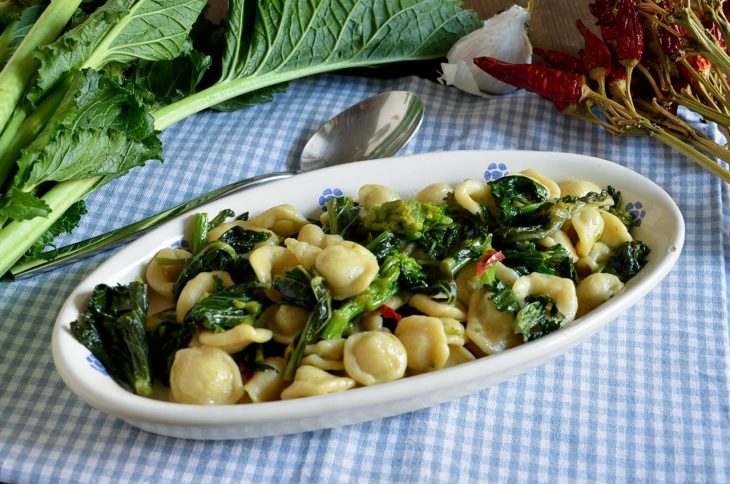
Puglia is also where much of Italy’s olive oil is produced and we highly recommend tastings.
The food of CAMPANIA is more commonly known as Neapolitan, and the region is responsible for two of Italy’s most appetizing exports, spaghetti and pizza. You’ll have no trouble finding spaghetti alla Puttanesca (a seafood pasta featuring anchovies, capers, olives, tomatoes, chili peppers, and garlic) and the most authentic pizza in almost any restaurant or pizzeria.
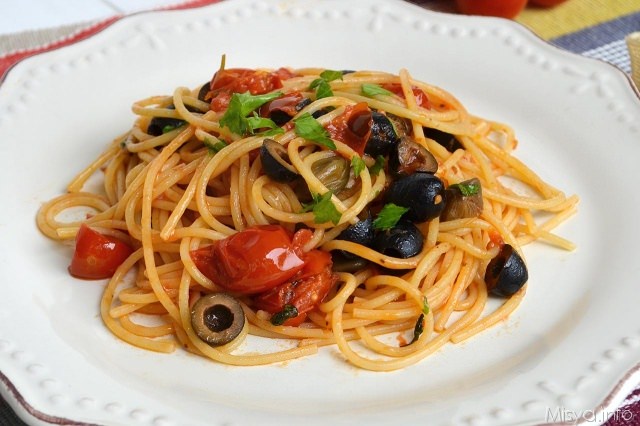
But the most appreciated treat of Campania is for sure mozzarella di bufala, a buffalo soft cheese with very ancient origins that you cannot miss.
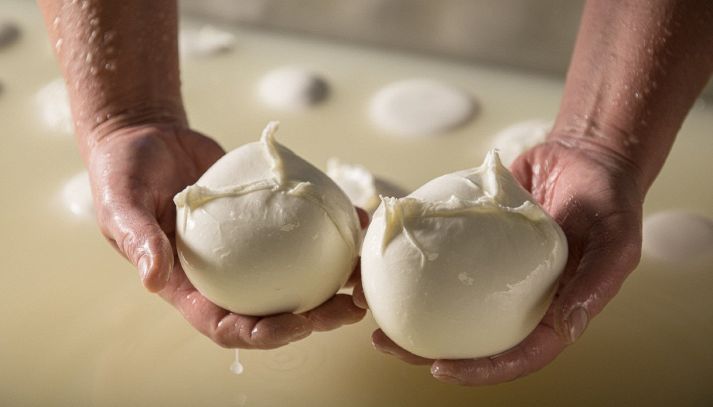
As a region, SICILY is amazingly fertile, and the variety of crops that can grow here (from oranges to eggplants, tomatoes to pistachios) is nearly unparalleled. Combine this with a wealth of seafood found just off the coast, and you have the recipe for a fantastic gastronomy scene.
Among Sicilian delicacies there is sfincione, a rectangular, thick, and doughy crust, actually quite similar to focaccia. As for toppings, you’ll find the traditional tomatoes, onions, anchovies, and herbs for seasoning, as well as local cheese, like caciocavallo, a stretched-out curd cheese made of goat’s milk.
When it comes to Sicilian snacks, we cannot speak about arancine, which consist of fried risotto croquettes stuffed with meat and mozzarella cheese.
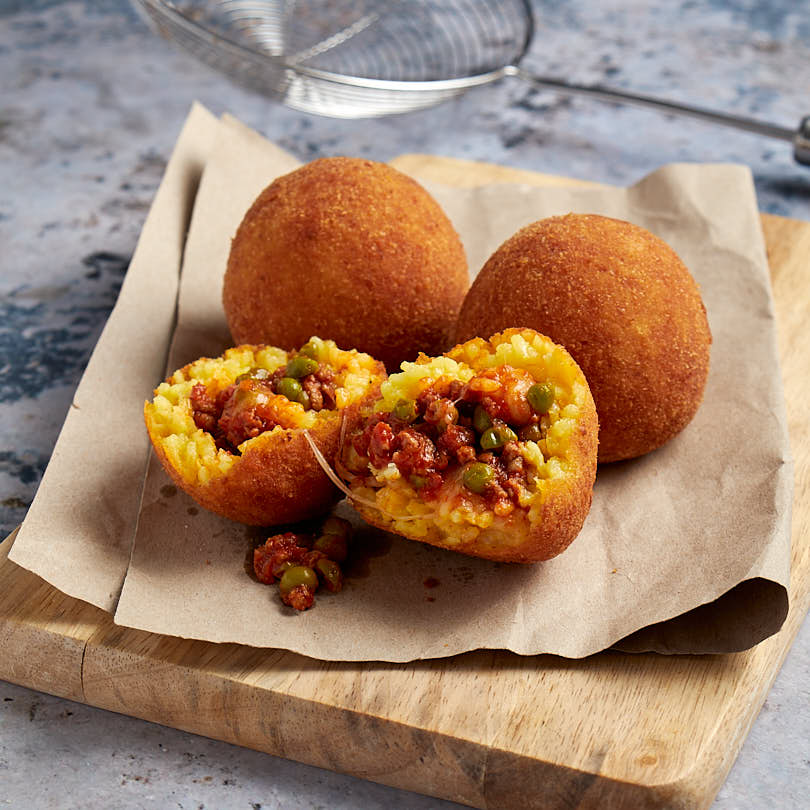
And for dessert, don’t forget cannoli, the signature deep-fried pastry tube of Sicily.

Hope this guide helped you understand which dishes you definitely don’t want to miss!
See you soon and have a good day!
Elisa
ITALIAN REGIONAL SPECIALTIES pt.1
30 Marzo 2022Hi everyone,
today we’ll talk about food, again.
Yes, because we all know that if you choose to tie the knot in Italy, you must be a foodie 🙂
Joking aside, the gastronomic part of a wedding is extremely important, and for an Italian destination wedding, it is even more central.
If you look for tasty, well-prepared and high quality food, no matter the region you choose, you know you won’t be disappointed.
But, menus should also suit your personal tastes and the variety of Italian dishes really is endless.
That’s why we want to give a brief description of a few regions’ main specialties, so you can grasp some of the different gastronomic styles and cultures.
Let’s start with our beloved VENETO, a region steeped in dramatic shifts: from the mountains down to the shores of the Adriatic.
Venetian food varies greatly, both from Italy as a whole and even within the seven provinces that make up the region.
Tortellini, polenta, bigoli and risotto are very common dishes.
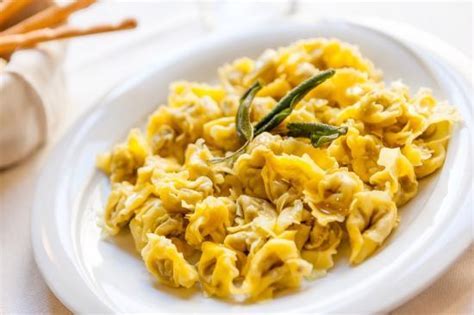
On the shores of the Adriatic, seafood risotto is popular, but the further inland you travel, you’ll find plenty of variations including pumpkin, radicchio, and Amarone wine.
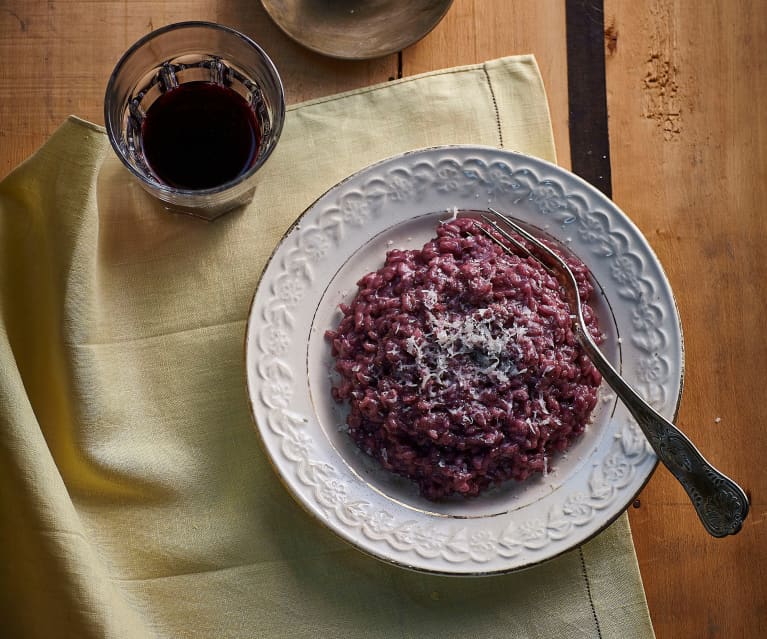
Talking about desserts, the world-famous Tiramisù was born here.
Nestled between the mountains and the sea in Northwest Italy, LIGURIA is synonymous with the Italian Riviera. And being a coastal region, it also has a close association with fresh seafood, particularly fish, mussels, and squid.
But, pesto is the most appreciated ingredient in Liguria cooking: you can trace its origin back to Genoa, Liguria’s capital city. It is usually paired with trofie (typical Ligurian pasta), potatoes and green beans.
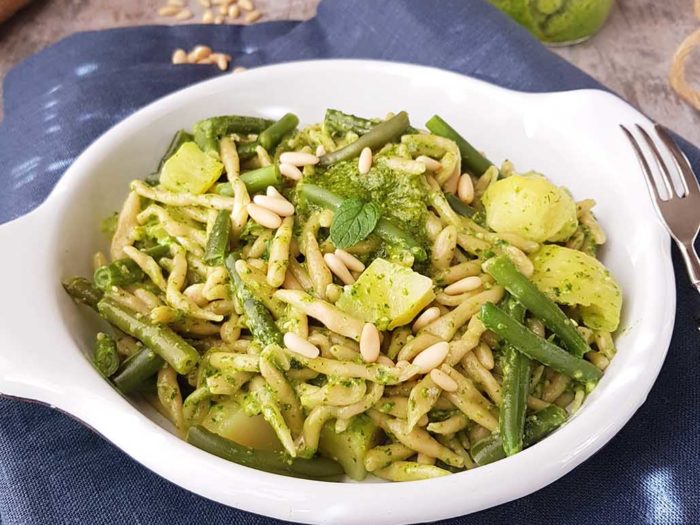
Hearty, simple, and seasonal, a trip through TUSCANY is like a trip through Italy’s culinary heart.
You’ll quickly notice almost all meals in Tuscany are served with a simple loaf of unsalted bread. This tradition dates back to the 16th century when a tax placed on salt forced local bakers to get creative with their baking. The salt tax is long gone, but the tradition has carried on and in many ways is the signature element of Tuscan bread. Initially, this bread may seem a little flavorless, but you’re missing its main purpose, to soak up leftover sauce and juices on your plate after the meal is done.
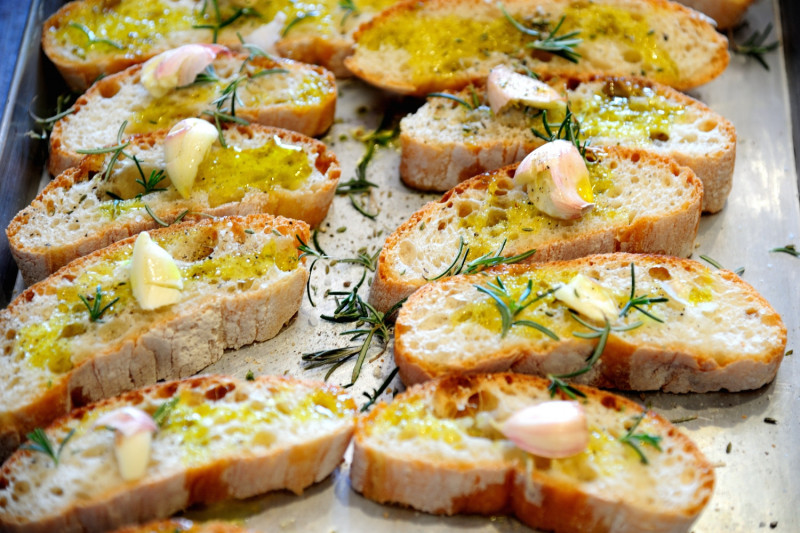
Bread shows up throughout Tuscan meals, from fettunta (a traditional bruschetta) to ribollita (a twice boiled soup). You’ll even find bread salad, better known as panzanella, which is day-old bread mixed with a medley of sun-ripened vegetables, drizzled with olive oil and vinegar.
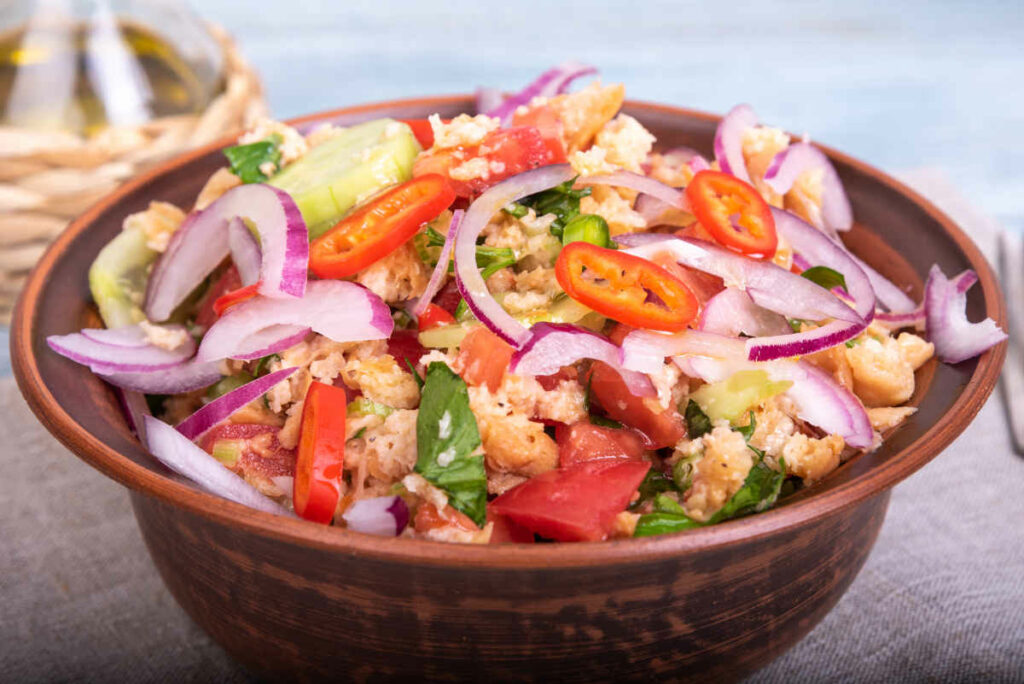
Pasta is also (unsurprisingly) popular, particularly pappardelle alla lepre, which is an egg noodle dish served in a wild hare sauce. For many, this is the signature Tuscan meal. Other meat dishes include cinghiale in umido (a wild boar stew) and bistecca alla Fiorentina—a Tuscan steak that comes from the Chianina breed of cow.
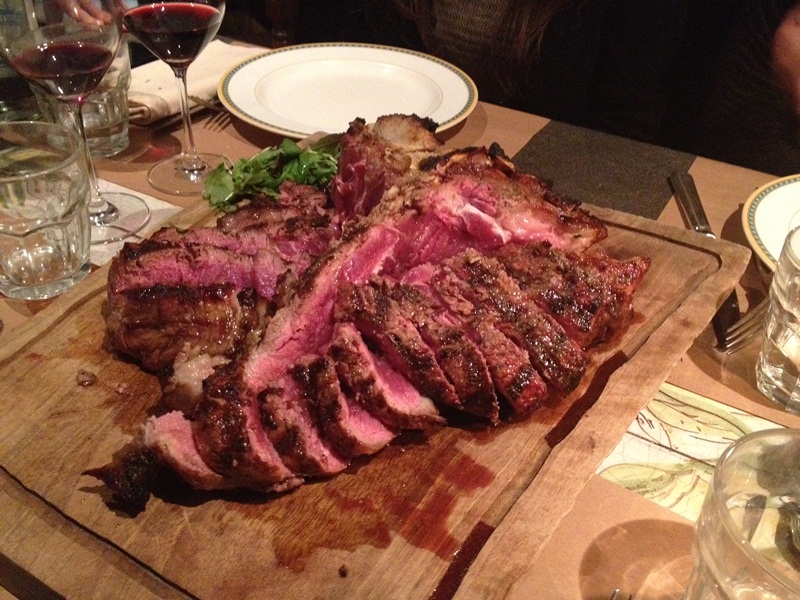
In UMBRIA, it feels as if everything good to eat comes from the woods. Game such as cinghiale (wild boar) works its way into every course — except dessert, of course. Then there’s tartufo. The black truffle grows just below ground level in deciduous forests all over the region.
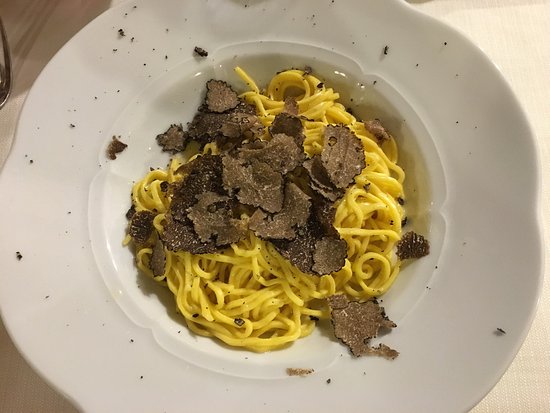
Still more prized is the tartufo bianco (white truffle) that appears around Gubbio in late autumn. The dish itself could hardly be simpler. Simply toss fresh, handmade pasta strands with a little butter and some grated Parmigiano to taste, and as much truffle as you’re allowed.
That’s enough mouthwatering recipes for today, let’s leave it there.
See you next week for the second part!
Love,
Elisa
As we underlined in the last post, Italy is synonymous with cooking. The techniques, recipes, and dishes born out of Italian kitchens are some of the most popular and influential throughout the world.
No matter where you call home, odds are there’s an Italian restaurant nearby… though the slices of pizza and helpings of spaghetti they serve may be very different from what you can expect on your trip here!
Depending on the region of Italy you visit, you’ll sample many dramatically different dishes.
Why? It has a lot to do with our country’s fascinating history and the proud cultures that flourish in the 20 regions.
If you have an appetite for learning more, join us for this look at Italian cuisine.
Italy is home to more than 2000 years of culinary history dating back to the Roman Empire. In fact, the Roman cookbook Apicius was compiled in the 1st century and today is believed to be one of the oldest collections of recipes ever discovered.
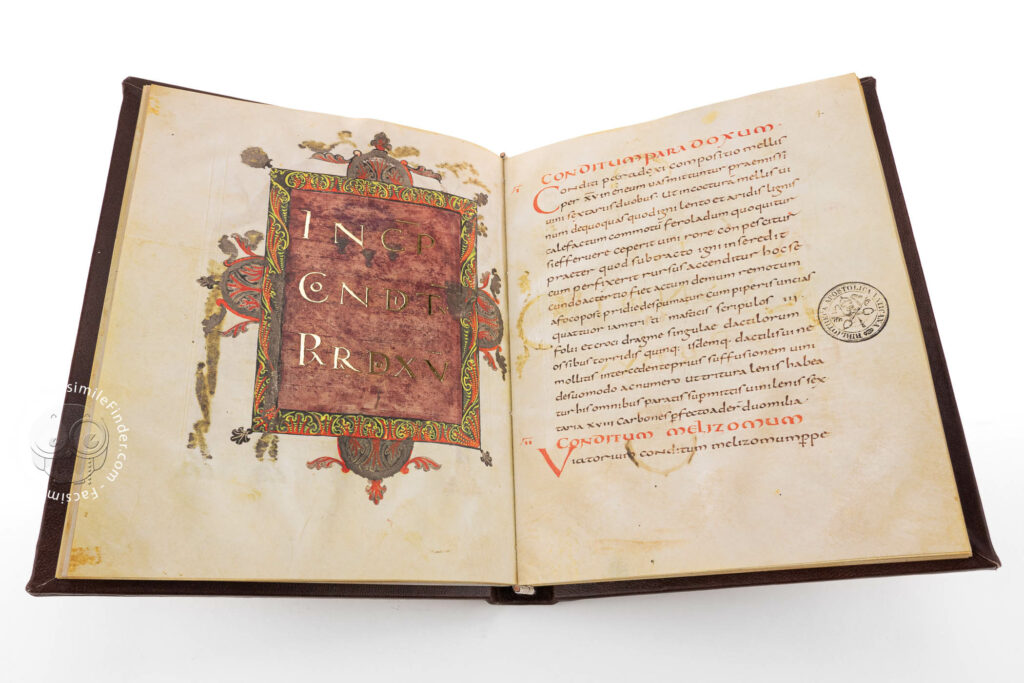
What is indisputable, however, is that the diversity of regional Italian food took off after the fall of the Roman Empire.
This massive political and cultural shift in the area gave rise to individual city states.
These city states and regions remained mostly autonomous until the late 1800s (well over a millennium) when Italian unification occurred, and the country of Italy was born.
During this period, each region fostered distinct traditions, including in the ways they would cook and prepare their food.
Now, this doesn’t mean similarities can’t be found throughout Italian kitchens and dining rooms. No matter the region, you’ll find emphasis placed on fresh, high-quality ingredients.
North and South: two worlds, connected
Italy’s not a large country, but the culinary differences between the north and south can sometimes make it feel like you’re dining in two different worlds.
Resting in the shadows of the Alps and the Dolomites, Northern Italian meals take a great deal of influence from the European countries it borders.
You’ll find notes of French cuisine in this area, as well as influences from Italy’s Swiss and Austrian neighbors.
Meat and dairy both factor heavily in Northern Italian dishes, as do rice and cheeses. The closer you get to the water, the more you’ll notice seafood on the menu.
You may be surprised to learn that pasta dishes aren’t as popular up here as they are in the south, but there is a distinct richness to Northern Italian food, highlighted by the butter-based creamy sauces that often top a dish: risotto, polenta, gnocchi, and stuffed pasta are all northern staples, as are cured meats such as Prosciutto di Parma.
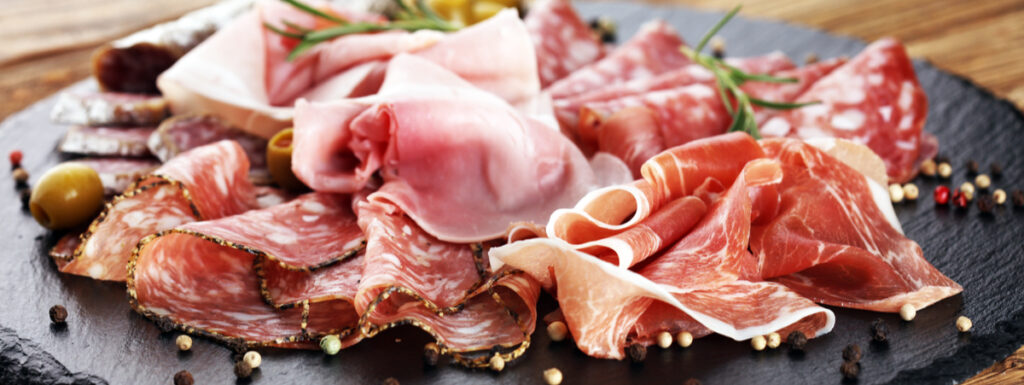
Making your way south and deeper into the Mediterranean, you’ll find meals infused with Greek and Moorish influences.
Southern Italian dishes are where the elements of simplicity, minimal ingredients, and a touch of creative thinking shine. The naturally warm climate of Southern Italy means ingredients such as peppers, tomatoes, and olives are readily available, and form the basis for many of the South’s iconic culinary exports including pasta dishes, olive oil, and pizza margherita.
Southern Italian dishes also take advantage of hauls from the Mediterranean. You’ll often see recipes that call for octopus, fresh sardines, anchovies, tuna, and swordfish.
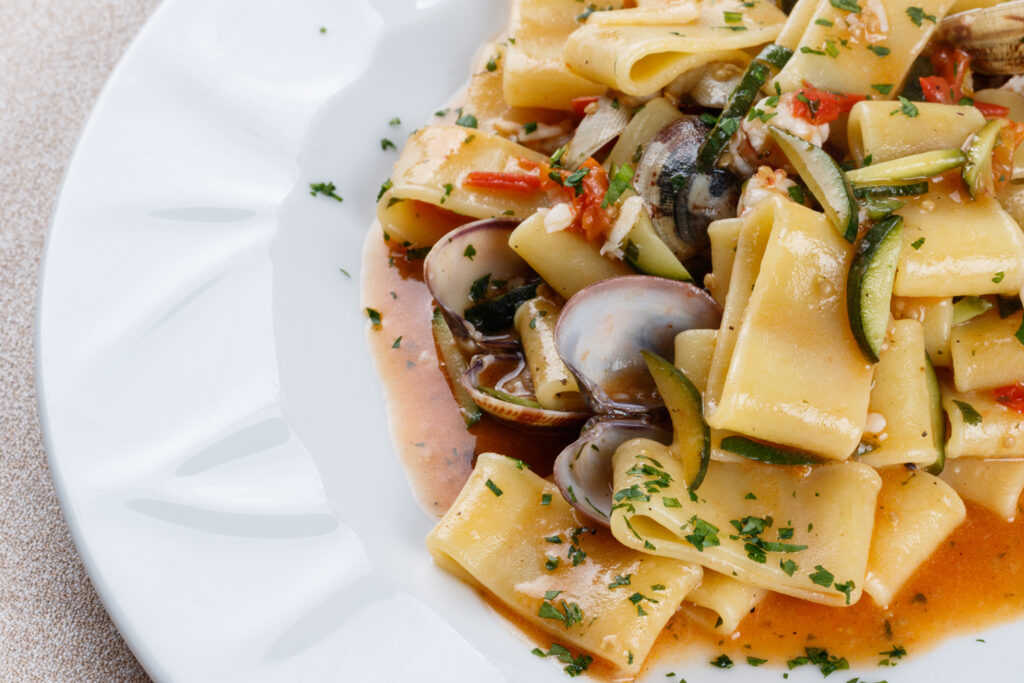
Continue following us for a region-by-region culinary overview: we’ll make you discover some of the best dishes of every Italian corner.
You could also pick up some of the secrets of Italian cooking… or at the very least, a new favourite dish 😉
Have a good day!
Elisa
Italy’s cuisine has evolved over the centuries, and in the present day, it has expanded far beyond the Italian peninsula to be an influence in culinary traditions throughout the world.
Italian cuisine has elevated itself to be one of the most appreciated culinary traditions in the world, with many considering it a form of art.
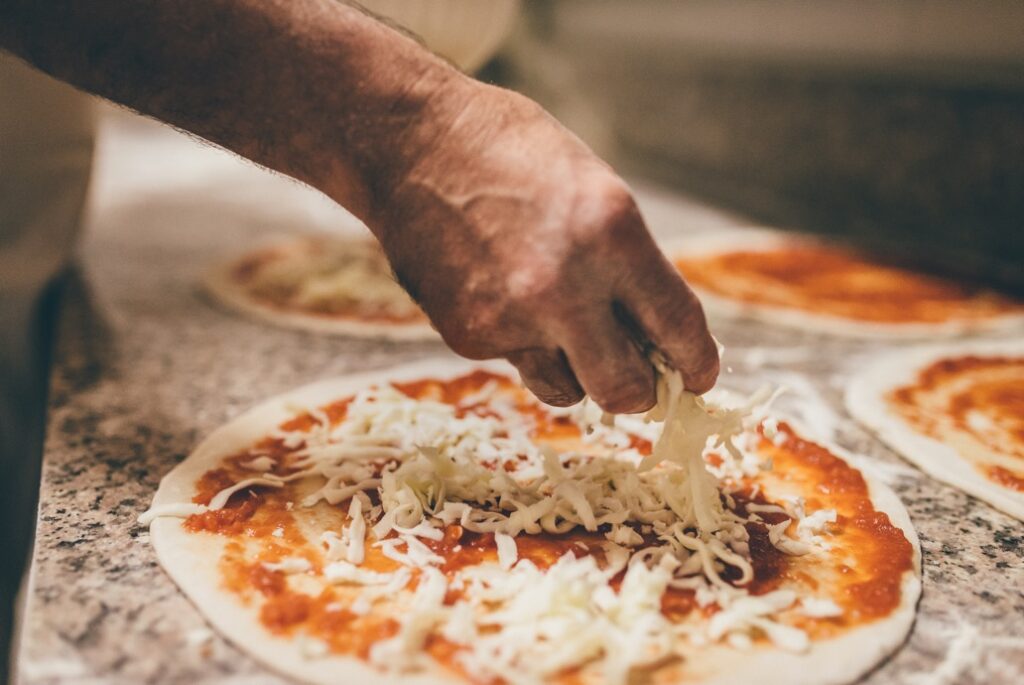
But what, exactly, is Italian food culture?
While Italian food is certainly distinctive, it’s hard to pin down just one “Italian” food culture.
The truth is that the Italian peninsula has a wealth of culinary diversity, ranging from the seafood-based delicacies of Sicily to the simple, rustic fair of Tuscany and everything in between.
Many of what people consider traditional Italian dishes, such as pizza and pasta, come from central Italy, while the North showcases all forms of meat and fish and the South has perfected the many uses of the tomato.
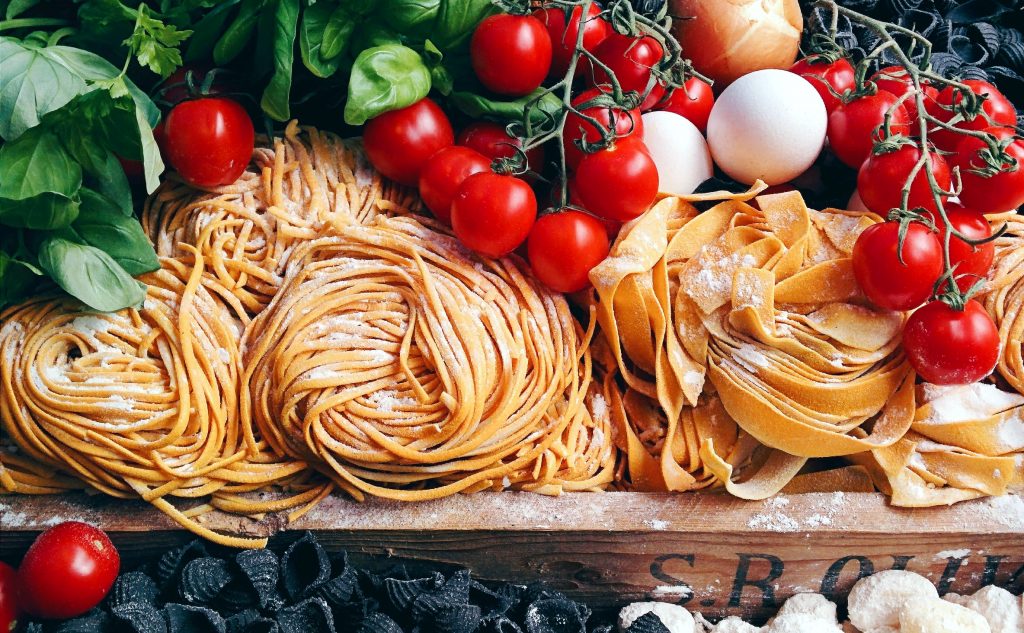
That said, there are some common themes that can give us a better feel for Italian culinary culture.
Of course, there are some distinctly Italian ingredients: tomato, eggplant, and basil are iconic Italian vegetables; cured meats are a staple throughout Italy, and the many varieties of pasta are the region’s most prominent calling card. In addition to this, Italy’s fine cheeses are famously well-known, and of course, no Italian meal would be complete without a glass of exquisite Italian wine.
But perhaps even more central to Italian food culture is the general approach that Italians take to cooking.
Italian food is defined not so much by the type or variety of ingredients, but by a respect for quality and simplicity.
Most authentic Italian dishes only have a few ingredients: a traditional margherita pizza, for example, has only 4. But those ingredients are made to the highest standard of quality using time-honored traditions.
Italian food culture is about starting with fresh, quality ingredients, keeping the recipes simple, and letting the natural flavors of the food do all the work.

In the next posts, we’ll try as far as possible to break down this immense culture and describe some Italian traditions and dishes, not only the popular ones.. also those that are lesser-known but deeply loved by Italian people.
Stay tuned!
Elisa

